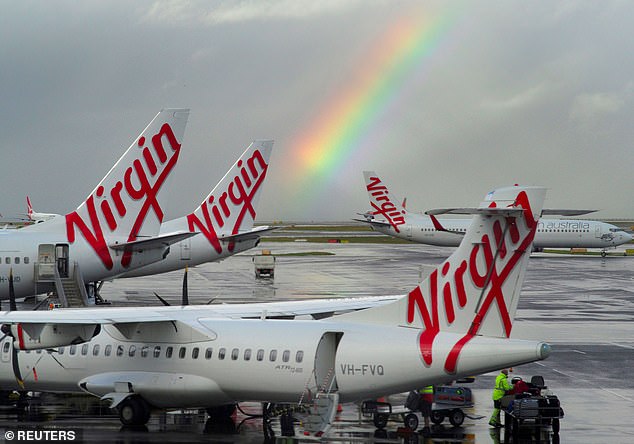Virgin Australia flight attendant breaks their leg as packed plane suddenly plunges during flight from Melbourne to Adelaide
A Virgin Australia flight attendant eating a meal in an aircraft galley suffered a broken leg when a high-speed descent went wrong.
The attendant was one of two cabin crew members injured during a domestic flight from Melbourne to Adelaide in September 2017.
A new Australian Transport Safety Bureau report has found the actions of the captain, a first officer acting as pilot, contributed to their injuries.
A Virgin Australia flight attendant eating a meal in an aircraft galley suffered a broken leg when a high-speed descent went wrong (file picture)
The Boeing 737 was instructed by air traffic control to perform a high-speed descent near Adelaide Airport.
A sudden wind change during the descent resulted in the aircraft’s speed increasing and approaching the maximum operating limit of 340 knots.
The concerned captain abruptly pulled back on the control, disconnecting the autopilot.
It meant sudden changes to the aircraft’s pitch altitude and vertical acceleration as the attendants stood in the rear galley eating a meal.
Both suffered injuries during the incident, the report said, with one ‘badly’ breaking their leg.
It then took over 90 minutes for the crew member to be removed from the plane after touching down in Adelaide.
They were unable to walk or sit in a wheelchair and an ambulance stretcher would not fit down the aisle, the report noted.
Emergency services ultimately dragged the injured staff member to the front of the aircraft using a slide sheet before moving them onto a stretcher.
The ATSB said Virgin has since changed procedures for ground staff responding to emergency services requests, and has updated training and information for pilots on overspeed and overspeed recovery.
Dr Stuart Godley, the bureau’s director of transport safety, said the commercial flight had exceeded its maximum operating speed by one knot.
He said it served as a reminder to pilots that they can decline air traffic control instructions if they believe them unsafe in the circumstances.
